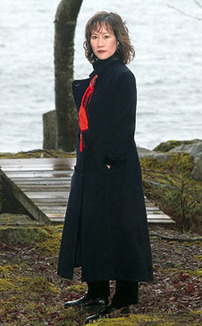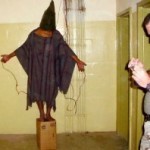Matt Rees's Blog - Posts Tagged "tess-gerritsen"
From Romance to Corpses: Tess Gerritsen’s Writing Life
 Tess Gerritsen started with romance, but soon realized that dead bodies were where it’s at. At least, dead bodies handled deftly by the two most compelling female series characters in thriller fiction, Detective Jane Rizzoli and Dr. Maura Isles. Her first books were romance novels, but after writing eight of them she switched to medical thrillers. The 25 million books she has sold prove that this was one plot twist she very much got right. The first of many, in fact. Tess is an absolute master at a particular kind of twist which does more than simply surprise the reader. Her plotting and pacing genius is such that each new element seems to set the actual book racing as fast as the reader’s pulse. I saw her at work in this way at a recent book festival in Dubai. At a social barbeque for the writers attending, we were chatting about an anecdotal incident from another writer’s student days. Tess took what had been a moderately disturbing moment for the writer and instantly rattled off enough nimble plot twists to structure the first quarter of a fast-paced thriller—so that those of us chatting around the roasted chickens were gasping and wishing for her to tell us how the story would end. That’s part of Tess Gerritsen’s tremendous gift. But once she has that idea, how does she proceed? Here’s what she has to say about her Writing Life:
Tess Gerritsen started with romance, but soon realized that dead bodies were where it’s at. At least, dead bodies handled deftly by the two most compelling female series characters in thriller fiction, Detective Jane Rizzoli and Dr. Maura Isles. Her first books were romance novels, but after writing eight of them she switched to medical thrillers. The 25 million books she has sold prove that this was one plot twist she very much got right. The first of many, in fact. Tess is an absolute master at a particular kind of twist which does more than simply surprise the reader. Her plotting and pacing genius is such that each new element seems to set the actual book racing as fast as the reader’s pulse. I saw her at work in this way at a recent book festival in Dubai. At a social barbeque for the writers attending, we were chatting about an anecdotal incident from another writer’s student days. Tess took what had been a moderately disturbing moment for the writer and instantly rattled off enough nimble plot twists to structure the first quarter of a fast-paced thriller—so that those of us chatting around the roasted chickens were gasping and wishing for her to tell us how the story would end. That’s part of Tess Gerritsen’s tremendous gift. But once she has that idea, how does she proceed? Here’s what she has to say about her Writing Life:You had a career in medicine before you published. But for how long
before you became a professional writer were you interested in writing?
I knew I was a writer at age seven. I wanted to apply to journalism school as a teen, but my father -- a very practical Chinese-American parent -- warned me that writing was no way to make a secure living. As an obedient Chinese daughter, I followed his advice and went to medical school instead. But a few years into being a doctor those old writing impulses reasserted themselves and while I was home on maternity leave with my sons, I wrote my first novels. A few years later, I realized that I really could make a living as a writer – and I've been one ever since.
How long did it take you to get published?
I wrote two practice manuscripts before my third was accepted. That was CALL AFTER MIDNIGHT, a romantic thriller that was published by Harlequin/Mira books. I wrote romances, and then wrote a thriller HARVEST, which was my first really big bestseller. I've stuck with thrillers since then.
Would you recommend any books on writing?
TELLING LIES FOR FUN AND PROFIT by Lawrence Block is my favorite advice book about the craft of writing. It's funny, it's snappy, and it's spot-on.
What’s a typical writing day?
Breakfast, coffee, exercise, and then four first-draft pages. Only when I've written those four pages do I call it a day. It usually takes me all day to produce those four pages.
Read the rest of this post on my blog The Man of Twists and Turns.
Published on April 17, 2011 05:40
•
Tags:
american-crime-fiction, crime-fiction, medical-thriller, tess-gerritsen, thriller, writers, writers-interviews, writing-life
Sicko Writing: Is Crime Fiction Too Gory?
 When I worked as a journalist at a major US magazine, it was clear that readers didn’t respond to hard news. They wanted features. Not fluffy features. Serious features. But they'd had enough of news stories about what happened that week.
When I worked as a journalist at a major US magazine, it was clear that readers didn’t respond to hard news. They wanted features. Not fluffy features. Serious features. But they'd had enough of news stories about what happened that week.What did the editors do? They ordered correspondents to write hard news. Because they didn’t care what readers wanted. They wished to appear as serious journalists before their peers, and serious journalists write tough hard news stories. Even if no one wants to read them.
I was put in mind of this as I listened to a BBC Open Book podcast about whether crime fiction has become too gory. Specifically whether descriptions of violence – and the torture of women in particular – have gone too far. I interpret that to mean: whether the violence is indulged for its own sake, rather than for the sake of plot or character development.
After listening to the show I felt as though I had been tuned in to a discussion by European liberals about multiculturalism – or some other subject on which all “decent” types agree and then simply talk about the nuances of their shared position, rather than ever saying “hey, there’s a case to answer here.”
I’ve seen a great deal of violence in my life. I’ve been a foreign correspondent in the Middle East for 15 years. I’ve seen people shot, blown up, burned to death, horribly maimed, and I’ve been threatened myself. I take no pleasure in that and I have no sympathy for those who would treat others’ suffering as entertainment. Perhaps that’s why I believe there is very much a case for crime fiction to answer: too many writers and presumably readers appear to be indulging in psychotically prurient interest.
That isn’t to say there’s no violence in my novels. But I’m very careful about its purpose, and I don’t require it to take place in front of the reader’s eyes, as it were. I try to think about Chandler’s great dictum on Hammett – that he put murder back in the hands of those who actually commit it in real life. No doubt some of those people are sadists, but most are criminals and most murders are committed with dispatch. That’s how I like it to be done in my books: by a criminal, not a psycho, and quickly, as a piece of business.
Read the rest of this post on my blog The Man of Twists and Turns.
Published on August 04, 2011 06:16
•
Tags:
bbc, crime-fiction, henning-mankell, jo-nesbo, mariella-frostrup, mark-billingham, open-book, tess-gerritsen
Lazy Writers and Productive Creatives
 There are lazy writers, writers who can’t say no, and then there are creative people who are able to combine their muse with their media.
There are lazy writers, writers who can’t say no, and then there are creative people who are able to combine their muse with their media.I’ve discovered this in recent months a couple of different ways. First, on a recent book tour, I spent a week at a book festival where I was together with the same bunch of authors all week. I asked many of them if they’d agree to be interviewed over email for my blog. All said yes. Some very significant writers, including UK bestseller Tony Parsons, wrote swift responses to my questions, and you can read them here on my blog.
Others agreed to do the interview only to prevaricate when I sent the questions. They suggested that they’d be able to get to the interview once they’d finished a current freelance project or completed a three month writing fellowship. Now, I don’t believe it takes long to write the answers to my questions, so either they were blowing me off or they harbored deep reservations against….work – or they think a blog interview is a more serious thing than I do…. Several others gave me email addresses which turned out not to exist, but they were all somewhat elderly ladies, so I’m prepared to ascribe that to forgetfulness and lack of internet savvy rather than a desire to throw me off the scent.
More recently, I asked Tess Gerritsen, the best-selling US thriller writer
whom I also met at a book fair, if she’d read my (forthcoming in the US,
currently available in the UK) historical mystery MOZART’S LAST ARIA and
perhaps supply a comment on the book – favorable of course – for my
publishers to post on the cover. In the business, it’s called a “blurb.”
Even though she embarked last month on three months of daily readings to
promote her excellent new novel THE SILENT GIRL – a strenuous schedule that includes no fewer than two book readings a day in its UK stretch – Tess
zipped back her blurb double-quick. “Mozart, music, and murder seamlessly
blend together in this fascinating historical mystery. A perfect read to go
with a crackling fire and a pot of hot chocolate,” Tess wrote.
Read the rest of this post on my blog.
Published on August 18, 2011 05:48
•
Tags:
blurbs, crime-fiction, historical-fiction, mozart-s-last-aria, nannerl-mozart, tess-gerritsen, tony-parsons, wolfgang-mozart, writers
MOZART'S LAST ARIA out now in the US
 My new novel MOZART'S LAST ARIA is out Nov. 1 in the US, published by HarperCollins. The book has earned terrific reviews from top writers like Tess Gerritsen, who says it's a "fascinating historical mystery. A perfect read." NPR compares it to The Da Vinci Code, and Kirkus Reviews says it "will delight fans of classical music." You can browse inside the book here and buy it here. Watch videos about the book and hear me read from it here.
My new novel MOZART'S LAST ARIA is out Nov. 1 in the US, published by HarperCollins. The book has earned terrific reviews from top writers like Tess Gerritsen, who says it's a "fascinating historical mystery. A perfect read." NPR compares it to The Da Vinci Code, and Kirkus Reviews says it "will delight fans of classical music." You can browse inside the book here and buy it here. Watch videos about the book and hear me read from it here.
Published on November 02, 2011 10:35
•
Tags:
crime-fiction, da-vinci-code, dan-brown, historical-fiction, mozart, mozart-s-last-aria, tess-gerritsen, wolfgang-mozart



